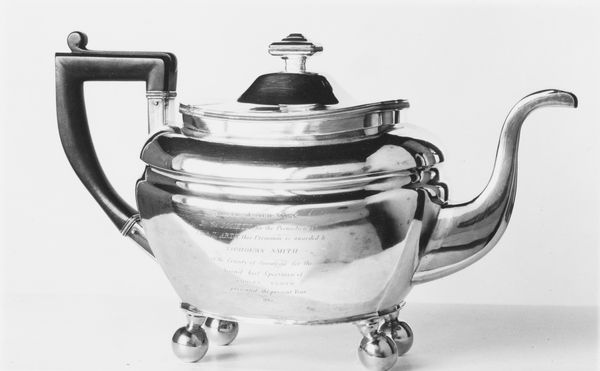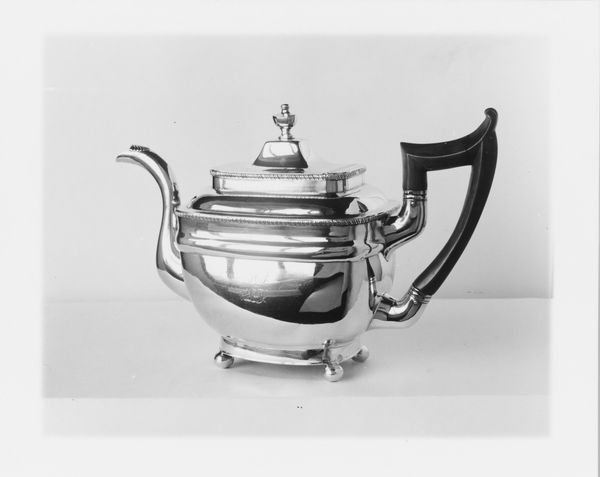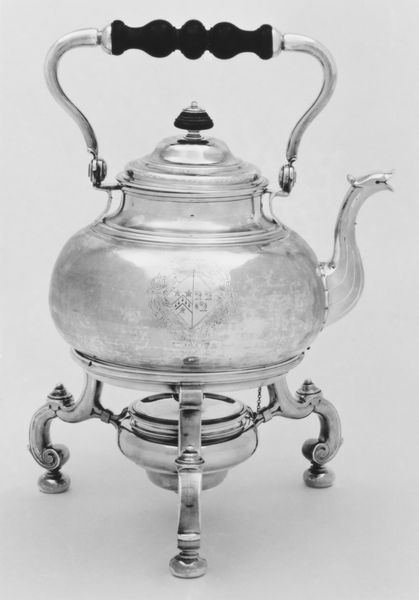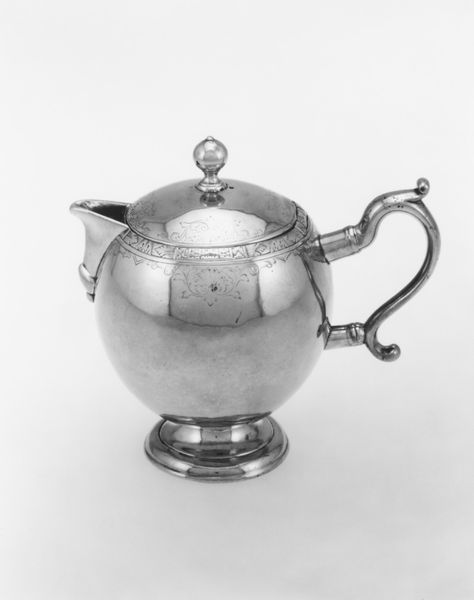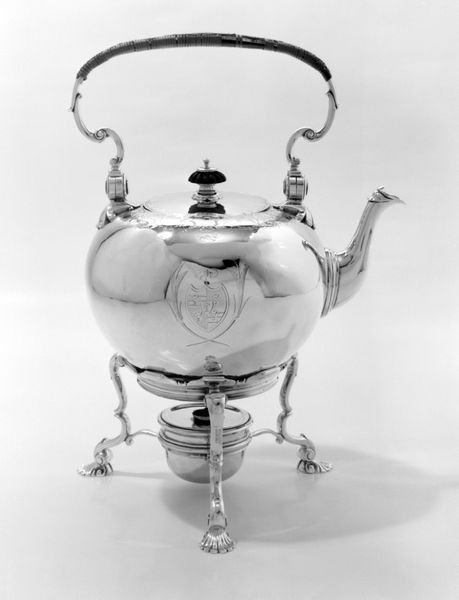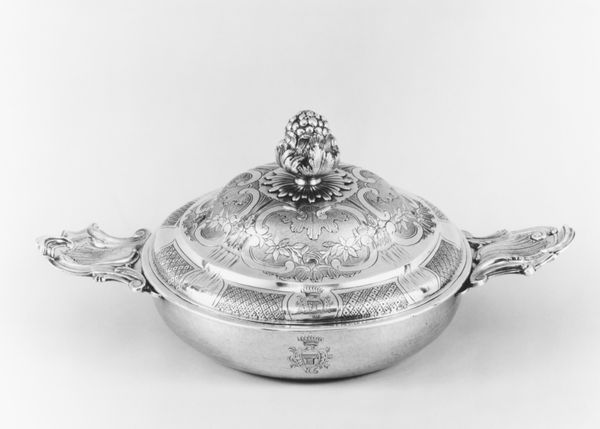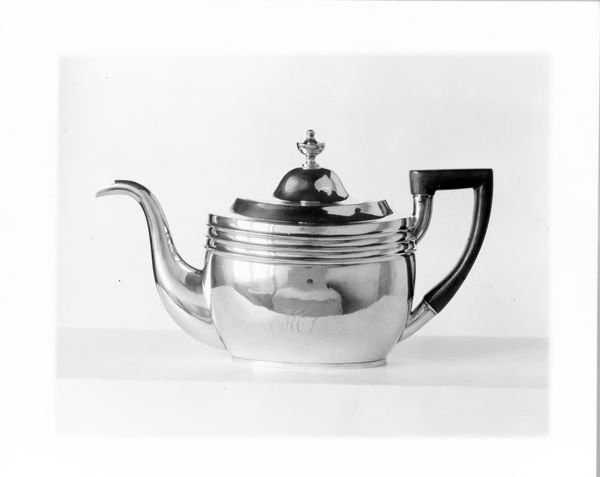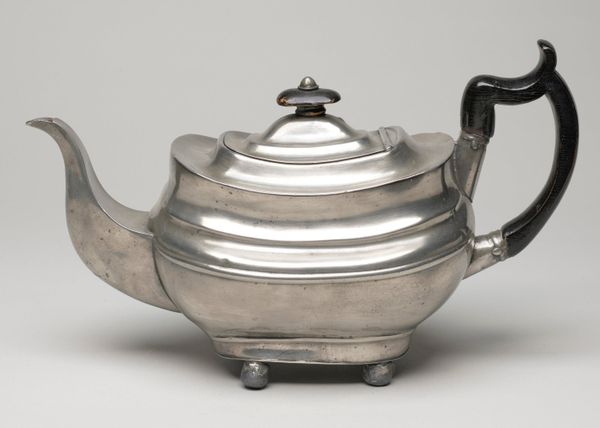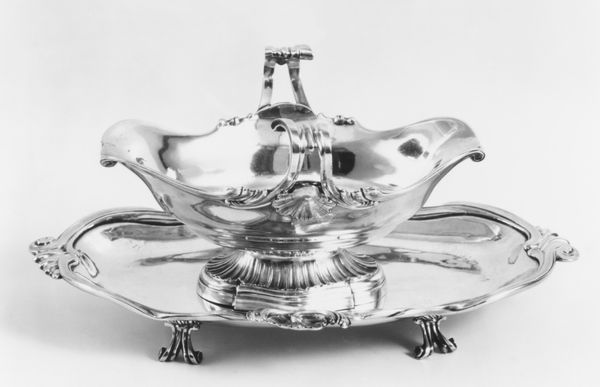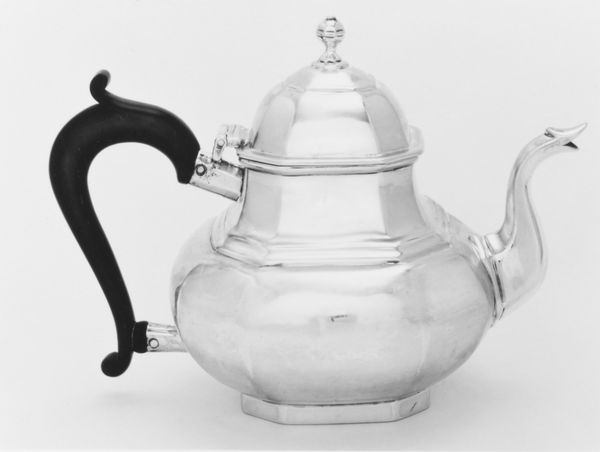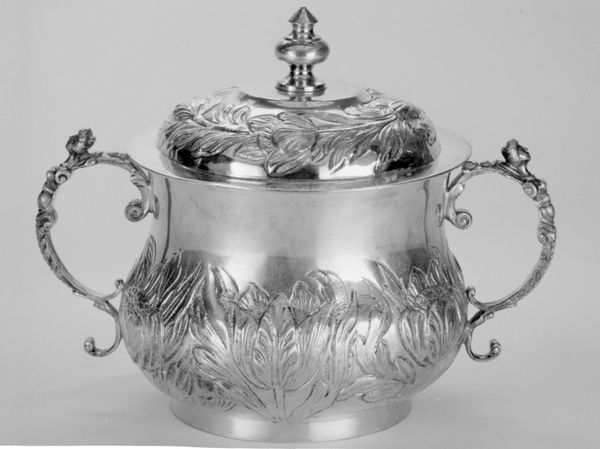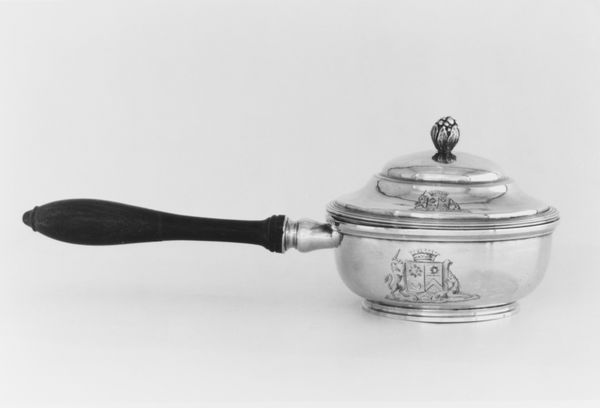
Dimensions: 6 5/8 x 12 15/16 x 5 3/8 in. (16.8 x 32.9 x 13.7 cm); 20 oz. 19 dwt. (651.7 g)
Copyright: Public Domain
Curator: Here we have a silver teapot, likely crafted between 1807 and 1810. It’s part of the decorative arts collection. Editor: My first impression is that it's surprisingly stout and solid, despite its refined appearance. It feels quite weighty and grounded for something associated with such delicate rituals as tea drinking. Curator: Right. We need to think about this teapot within a specific social context. Tea was becoming increasingly popular in the United States during the early 19th century, signifying a certain level of economic prosperity and social status. The tea service, therefore, turned into an important part of social gatherings. Editor: Absolutely. And look closely at the fabrication: it is clearly meant to impress, from the shaping of the silver to the delicate construction. The handle's curvature, those elegant little feet, they all speak to the time and labor poured into its making. One can almost feel the metalsmith’s hammer shaping the piece. It’s an interesting reflection on labor and craftsmanship. Curator: I agree. The ornate detailing and baroque flourishes speak volumes about aspirations of wealth in a young nation establishing its cultural identity. Remember that many American silversmiths aimed to replicate European styles to attract wealthy patrons. The teapot became an indicator, literally, of civility. Editor: Also, the reflective quality of the silver itself is crucial. Beyond its function, the object turns into a display of light and sheen. Someone considered not just its utility, but how its material could captivate and perhaps even seduce. Was this intended as a show of wealth through excessive material, perhaps? Curator: Quite possibly. In a time of increasing political and social polarization, such objects often served as symbolic ground for those in power, especially because decorative pieces were often given as gifts or part of inheritance. The placement of such objects, even how tea ceremonies would be handled within the household, reveals a certain display of domestic power. Editor: That makes perfect sense when considering all the stages, from extracting the raw material to finally seeing it gleam on the table. Curator: Indeed, an object becomes far more intriguing when viewed through these different lenses, each offering a different, equally valuable perspective. Editor: It becomes clear this teapot isn’t *just* for brewing tea.
Comments
No comments
Be the first to comment and join the conversation on the ultimate creative platform.
